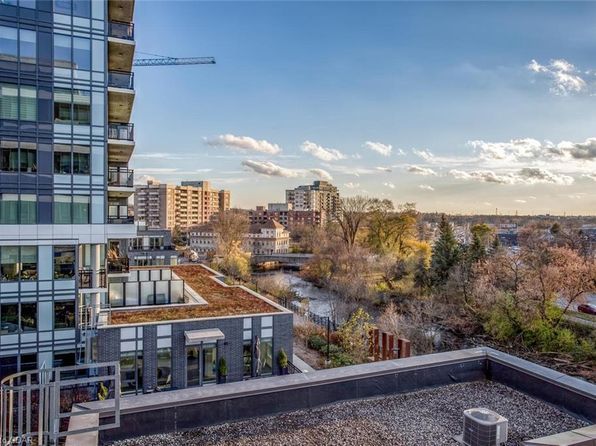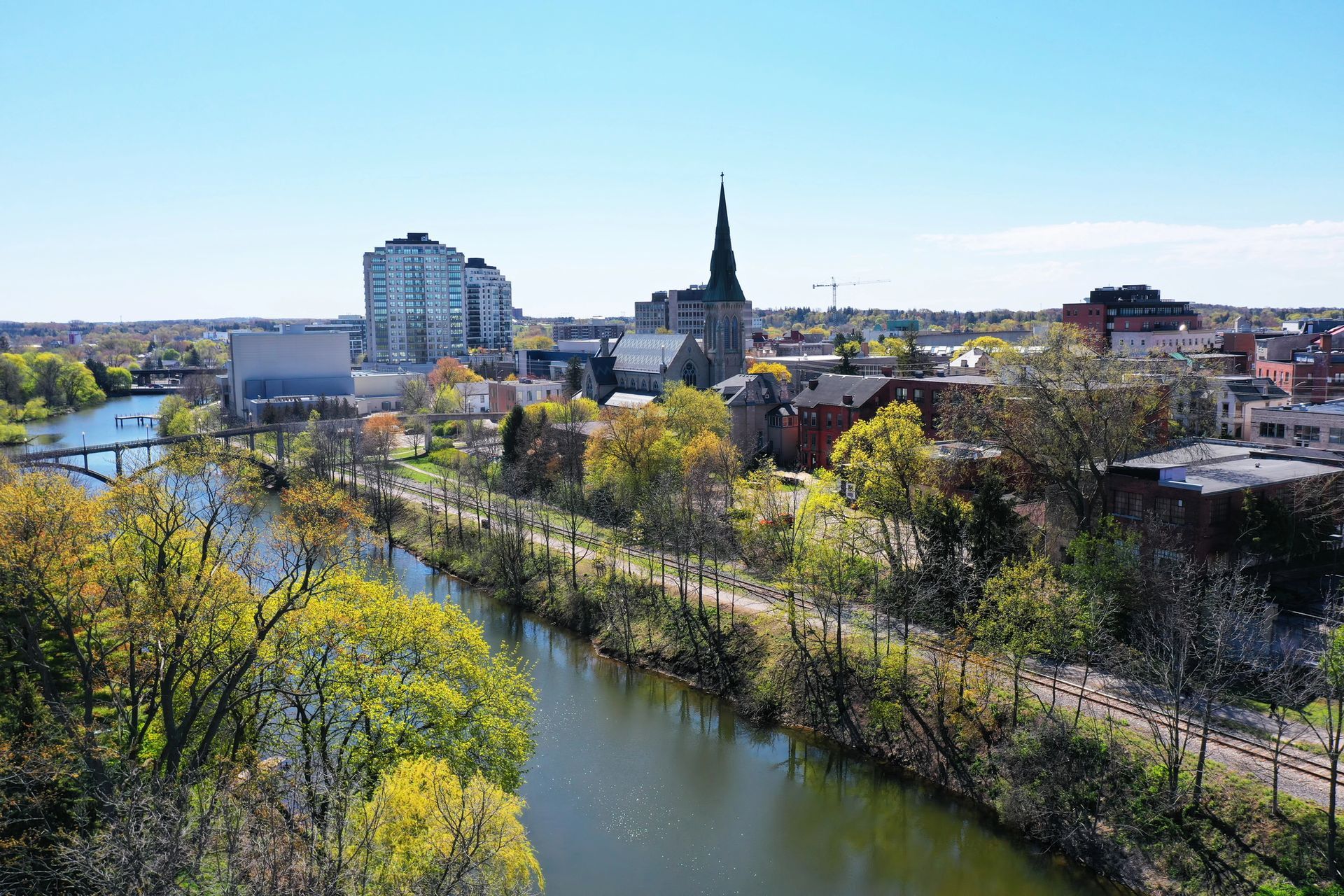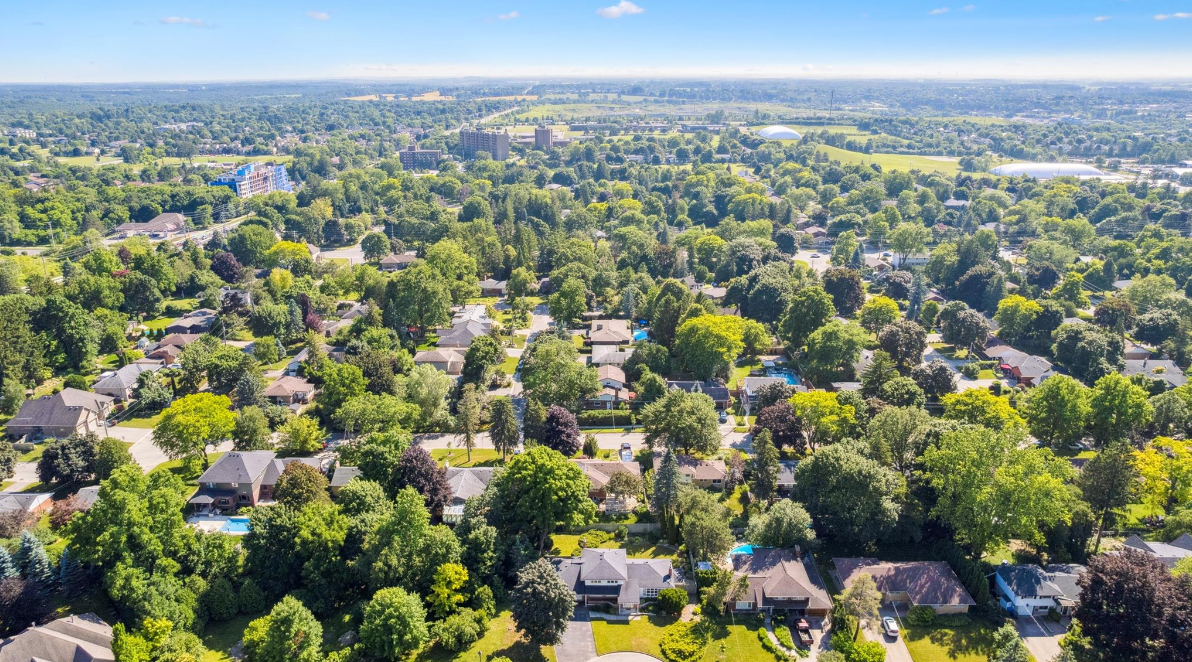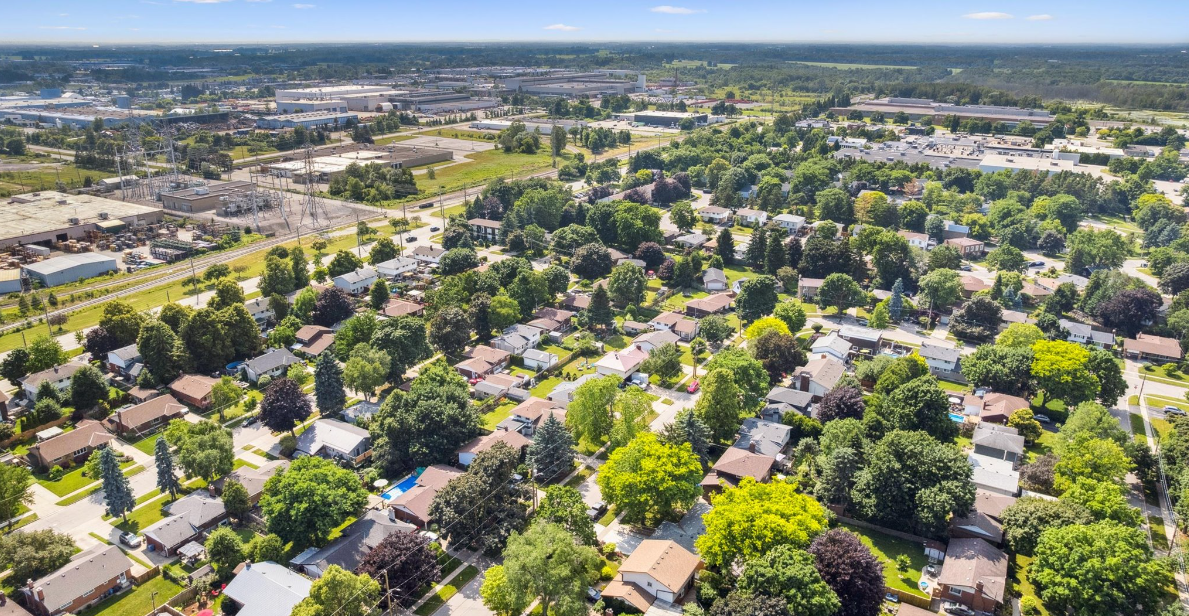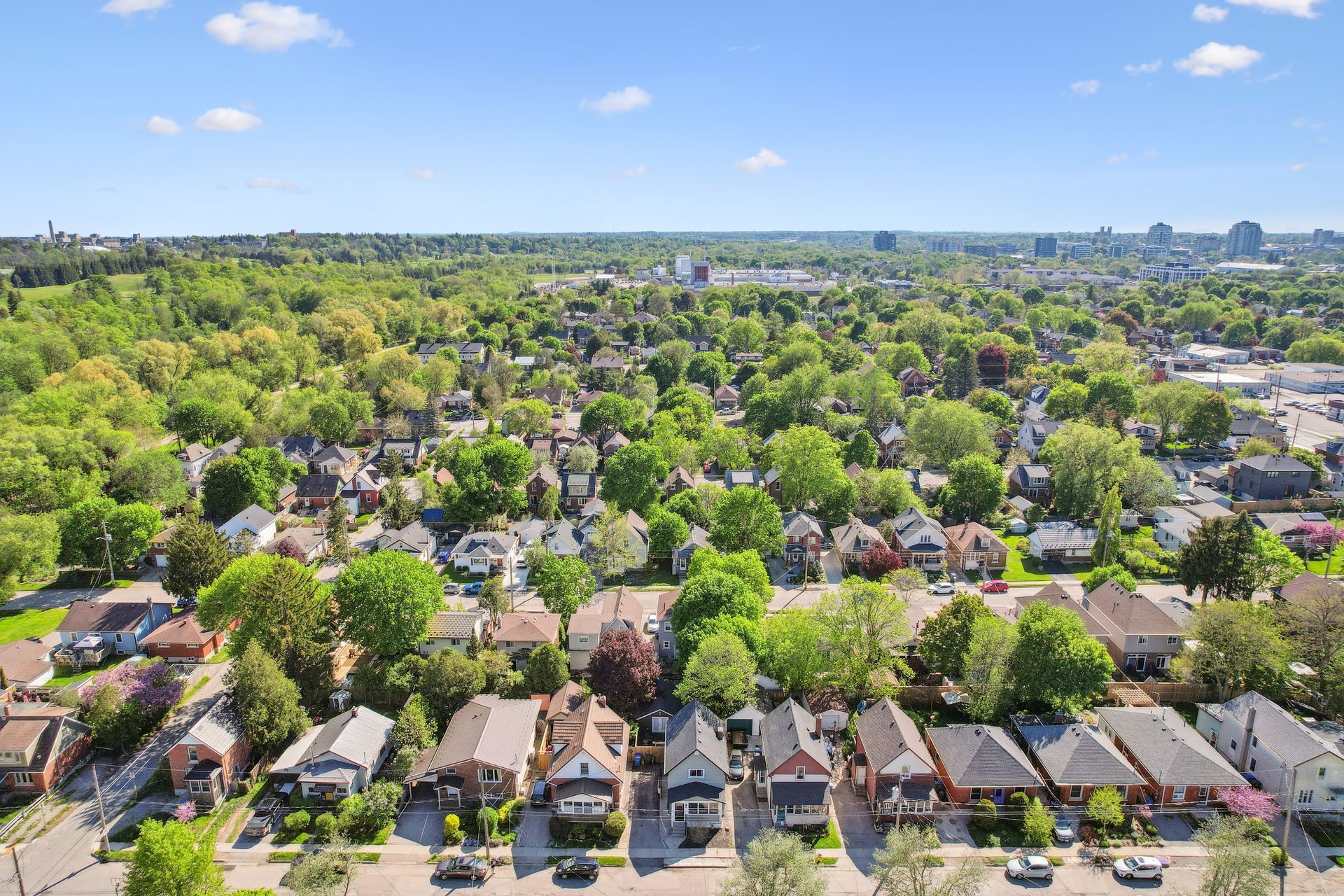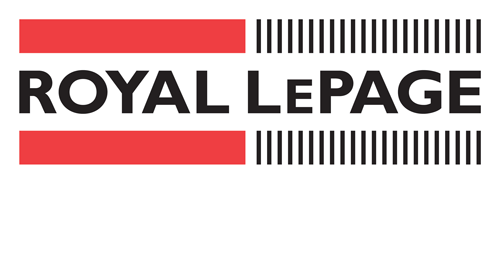Andra Arnold & Associates are a Top Rated, Award-Winning Guelph real estate team that has a passion for helping people. We truly live by our motto “Here to Help”. Our team brings quality expertise to our clients’ buying and selling experiences. The team's dedication, eagerness to help, and experience allow clients navigate one of life’s biggest decisions!
Historic Downtown Guelph: Stories from the Royal City
Stroll through downtown Guelph and you can almost hear the echoes of the past. Brick buildings, spires, and cobblestone-style streets tell stories of settlers, mills, markets, and more.
Known as “The Royal City,” Guelph was founded in 1827 by John Galt, a Scottish novelist with a knack for town planning. He carved out streets and imagined a community filled with character and purpose.
Keep reading to learn everything you need to know about the history, landmarks, and everyday life of downtown Guelph. From historic churches to farmers’ markets, from old mills to restored lofts, these streets carry the city’s past in a way you can still touch, see, and live in today.
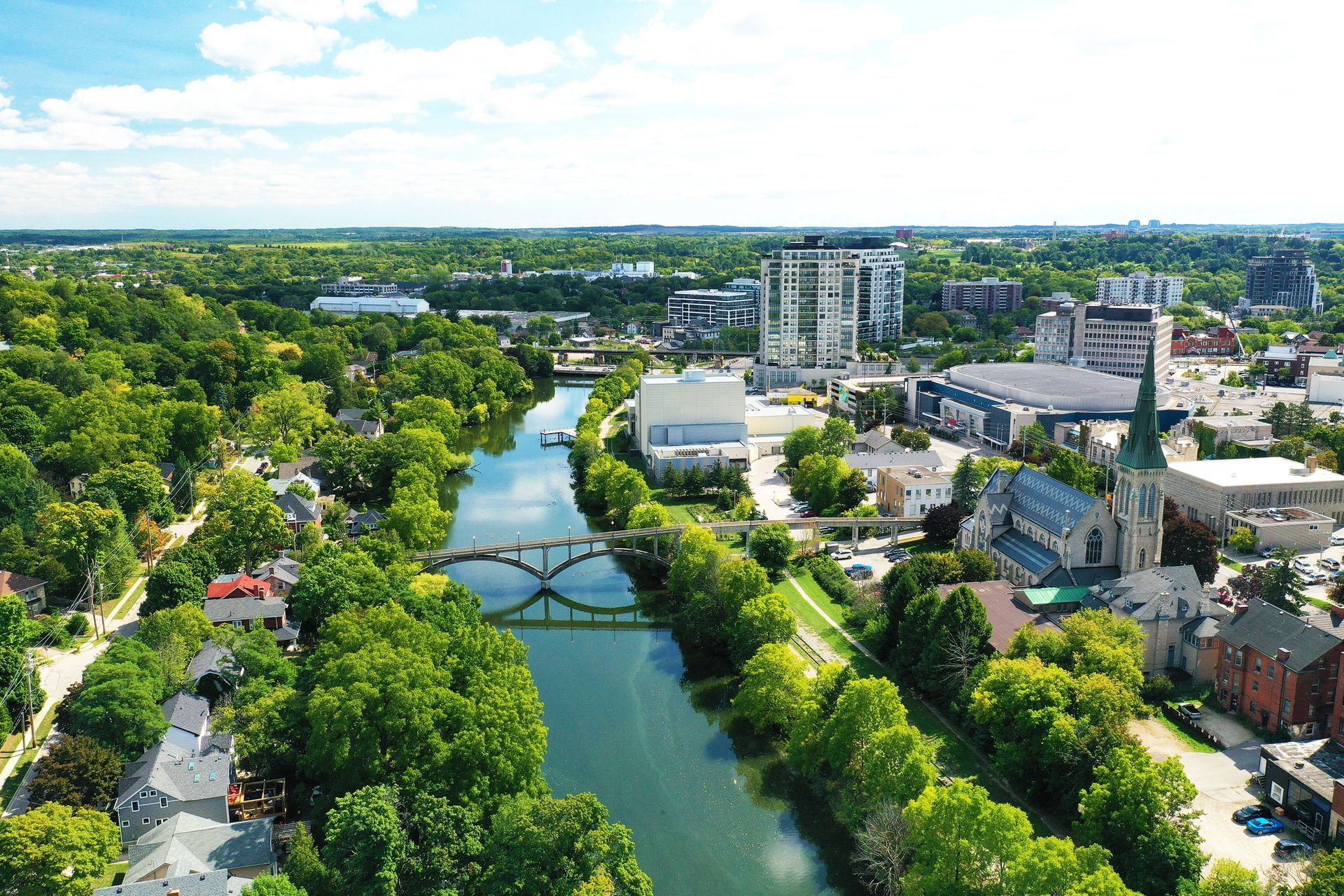
The Founding of Guelph
The roots of the city set the tone for the downtown we know today.
John Galt’s Vision
John Galt envisioned a town that was organized, functional, and welcoming. Streets were carefully laid out, public spaces considered, and access to the Speed River ensured water for mills and industry. He planned for a settlement that worked for people, not just for trade, setting a standard for community life from day one.
Why “The Royal City”
The nickname came from ties to British royalty and a desire for prestige. Streets, buildings, and civic planning reflected this connection, giving early residents pride and purpose that remains part of downtown’s identity today.
Architectural Icons of Downtown Guelph
These landmarks shaped life here and continue to draw people in.
Basilica of Our Lady Immaculate
Soaring above the city, the basilica showcases Gothic Revival design with spires, stained glass, and detailed stonework. It symbolizes Guelph’s early Catholic community and is a gathering place for events, reflection, and local pride.
Old Quebec Street Shoppes
Once a commercial street for 19th-century merchants, Old Quebec Street now houses cafes, shops, and small offices. The mix of old facades and modern businesses promotes continuity. You can literally feel the city’s past while sipping coffee or browsing local wares.
Sleeman Breweries’ Legacy
Sleeman Breweries began in the 1830s and grew into one of Canada’s best-known beer brands. Its historic downtown buildings host tours and tasting rooms. The brewery showcases the city’s industrial roots while showing how businesses can evolve alongside the community.
The Guelph Farmers’ Market: Nearly 200 Years of Community
Markets often reflect the soul of a city, and Guelph’s farmers’ market is no exception.
Origins in 1827
The market opened the same year Guelph was founded, providing settlers with a place to sell their produce, livestock, and goods. It quickly became the go-to for social interaction, trade, and civic life.
Evolution Over Time
The market has moved, grown, and adapted. From open-air stalls to a covered venue downtown, it has welcomed generations of vendors and shoppers while keeping its role as a community gathering point.
Its Role Today
Today, the market is a weekend destination. Fresh produce, baked goods, crafts, and flowers fill the stalls, while live music and cooking demonstrations give residents a reason to linger. It’s a space where downtown life still pulses.
Industrial and Cultural Heritage
Guelph’s downtown streets carry the marks of industry, and these structures now host arts and culture alongside their original uses.
Allan’s Mill and the Eramosa River
The Eramosa River once powered mills like Allan’s, providing work and fuelling early industry. Today, you can follow nearby trails and see remnants of these mills while enjoying peaceful river views.
The Textile and Manufacturing Era
Textile factories and small manufacturers once shaped downtown. Many brick buildings and timber frames remain, some of which have been repurposed as offices or studios while retaining their industrial character.
Transition to Arts and Culture Hub
As manufacturing declined, artists and entrepreneurs moved in. Galleries, studios, and theatres now occupy former mills and warehouses, keeping downtown active and engaging while honouring its history.
Preserving Downtown’s History
Downtown Guelph wouldn’t feel the same without the care given to its buildings and streets. Preservation keeps the character of the city alive, letting residents and visitors experience its story every day.
Civic Museum’s Role
The Guelph Civic Museum collects and shares the city’s history through hands-on exhibits, special events, and educational programs. From stories about early settlers and industrial growth to cultural milestones, the museum helps people of all ages understand how downtown came to be.
Heritage District Designation
Certain parts of downtown are officially protected as heritage districts. This means any renovations or new developments must respect the original look of buildings and streetscapes. The result is a downtown that still feels recognizable, with brick facades, historic windows, and architectural details preserved for generations to enjoy.
Community Groups and Walking Tours
Local organizations keep history alive through walking tours, volunteer projects, and lectures. You can follow the streets that housed old mills, shops, and theatres, all while learning the stories behind the buildings. These programs give residents and visitors a chance to experience history firsthand, making the city’s past feel present and relevant.
Living History in Today’s Downtown
In downtown Guelph, the past is part of your daily routine, whether you’re walking to work, grabbing coffee, or exploring your neighbourhood.
Heritage Homes and Condos
You’ll find century-old homes standing side by side with modern condos in carefully restored buildings. Many retain original details like hardwood floors, brick walls, and decorative mouldings. Living here means enjoying craftsmanship and character that new developments often struggle to replicate, all while being close to local shops, cafes, and cultural venues.
Walkability as a Historic Legacy
The Royal City’s Downtown streets are easy to navigate on foot. You can walk from parks to restaurants, boutiques to galleries, without needing a car. This pedestrian-friendly layout keeps life simple and makes the neighbourhood feel connected.
Businesses in Restored Buildings
Many historic buildings now house coffee shops, bookstores, art galleries, and small offices. Original features, such as brick walls, wooden beams, and historic facades, give each space its unique character.
Tips for Home Buyers
Thinking about making downtown Guelph your home? Here’s how to navigate a market with history, charm, and a few quirks.
Assess Heritage Elements
Buying a historic property is rewarding, but it comes with extra considerations. Century-old homes often feature original woodwork, brick, and other architectural elements that lend them character.
That charm comes with rules: renovations may need approval from the city or a heritage committee, and maintenance can be more intensive than in newer homes. Understanding these requirements before you buy helps avoid surprises and protects your investment.
Review Zoning and Infill Policies
Downtown Guelph has areas where new construction or additions are limited. Checking zoning rules is essential if you’re planning renovations, adding a garage, or considering infill development.
Zoning affects what you can build and how your property’s value might change over time. Getting clarity on these rules keeps your plans realistic and your investment secure.
Engage a Local Realtor
Navigating downtown’s market is easier with someone who knows it inside and out. A local realtor can help you understand pricing trends, identify hidden opportunities, and guide you through heritage regulations or zoning rules.
Discover the Downtown Lifestyle You’ve Been Waiting For
Downtown Guelph is where history meets everyday life, where morning coffee smells mingle with centuries-old architecture, and local markets keep traditions alive while serving today’s community.
Living here means being part of something bigger: a neighbourhood shaped by generations, full of stories waiting to be discovered, streets made for walking, and spaces that feel familiar and inspiring.
If you’re ready to explore what makes this corner of the Royal City special, there’s no better guide than someone who knows the neighbourhood inside out.
Chat with Andra Arnold & Associates and see where downtown Guelph could take you next.


